Target 4.2: Early childhood
By 2030, ensure that all girls and boys have access to quality early childhood development, care and pre-primary education so that they are ready for primary education
CREDIT: Refugee Trauma Initiative. Baytna brings children together at NRC community centre, Thessaloniki, Greece, 2018.
Early childhood education and care are crucial for cognitive and social-emotional development and serve a particularly important protective function in traumatic crisis settings.
The global indicator on participation in organized learning one year before the official primary entry age ranges from around 42% in low income to 93% in high income countries, with a world average of 69%, continuing a slowly but steadily increasing trend. By contrast, the pre-primary gross enrolment ratio, defined for an education level that lasts as little as one year in some countries and as many as four in others, reached 50% in 2017 (Figure 8).
Figure 8: Seven out of ten children attend pre-school the year before entering primary education

The other global indicator on early childhood development draws on the UNICEF Early Childhood Development Index (ECDI), which is calculated using mainly UNICEF Multiple Indicator Cluster Survey (MICS) data, although UNICEF is reviewing the ECDI methodology to address weaknesses, a process expected to finish by late 2018. Results from countries taking part in two rounds of the MICS over five years suggest that the share of children aged 3 to 4 on track in the literacy–numeracy domain grew by less than one percentage point per year on average. However, being ‘ready’ for school and ‘developmentally on track’ are elusive concepts, viewed differently around the world. Countries may need more discretion to use measures that serve their needs and are compatible with institutional structures and cultural characteristics.
Yet national systems to monitor school readiness are rare. More commonly, countries have national frameworks and procedures for monitoring staffing, training, facilities and curricula standards among providers (e.g. India’s 2013 National Early Childhood Care and Education Policy) or evaluating programme impact (e.g. the National Reporting System component of the US Head Start pre-school programme). In the early childhood development module of the World Bank Systems Approach for Better Education Results, just 8 out of 34 low and middle income countries collected data on children in all four domains covered (cognitive, linguistic, physical and social‑emotional development).
South Africa’s 2014 National Curriculum Framework envisages informal, observational and ongoing assessment based on six Early Learning and Development Areas, ascribing no marks or percentages but recording readiness for primary reception grade. Since 2014, the former Yugoslav Republic of Macedonia has maintained child development portfolios for all children enrolled in ECEC centres.
Previous year’s Target 4.2

